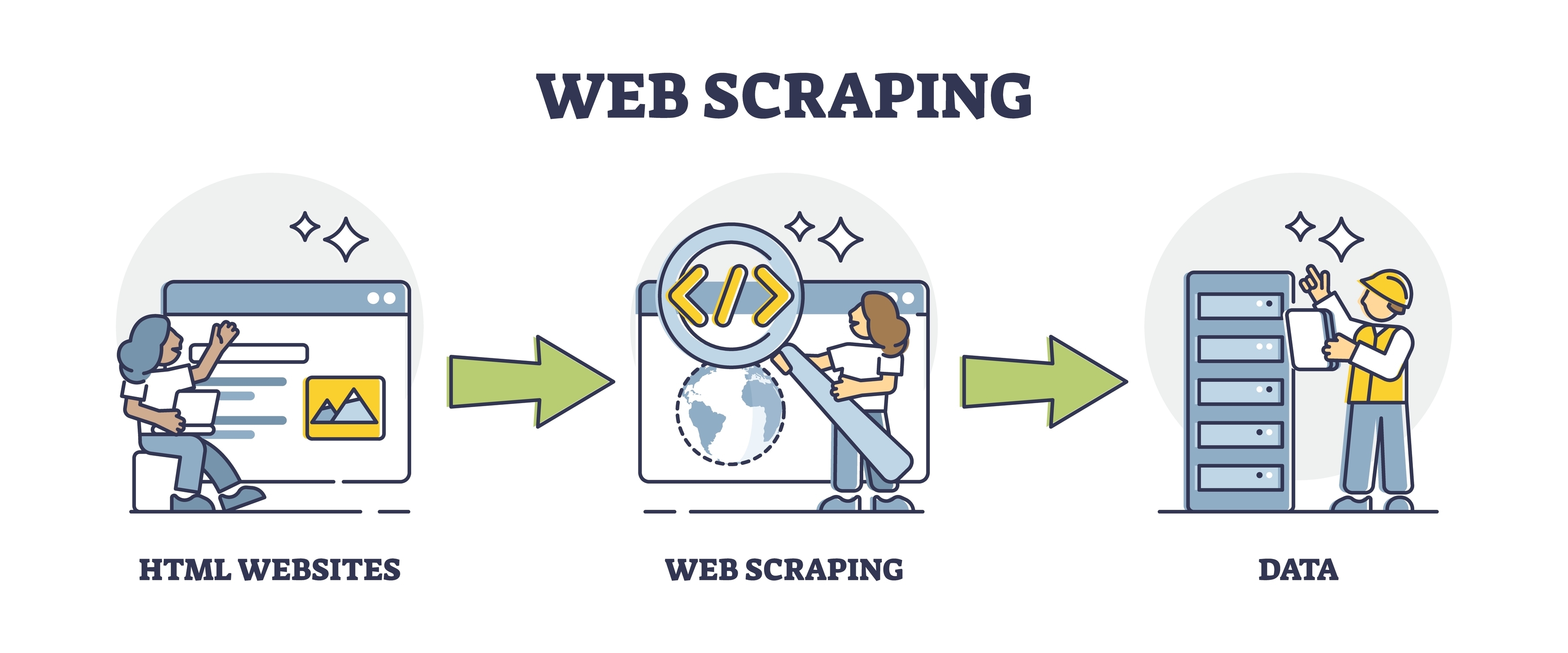
In the digital age, research methods have evolved dramatically, thanks in large part to the rise of web scraping. This powerful technique allows individuals and organizations to automatically extract large volumes of data from websites, transforming the way we access, analyze, and interpret information. Whether it’s for market research, academic studies, or HTML to PDF API competitive analysis, web scraping has revolutionized the research process by making vast amounts of data more accessible and easier to handle. In this article, we will explore how web scraping is reshaping research practices, enabling researchers to gather data quickly and efficiently, and uncover insights that would have been difficult or impossible to obtain through traditional methods.
1. Streamlining Data Collection and Increasing Efficiency
Traditionally, gathering research data involved time-consuming manual methods such as surveys, interviews, and collecting data from physical archives or government documents. These methods, while still relevant, often require significant effort and resources. Web scraping has changed this by automating the process of data collection. Researchers can now scrape relevant information from countless websites, databases, and online platforms in a fraction of the time. Whether it’s extracting financial data, academic publications, product prices, or news articles, web scraping allows researchers to pull in large datasets quickly, saving hours of manual labor. By automating the collection of information, researchers can shift their focus to analysis and interpretation, improving the overall efficiency of their research projects.
2. Access to Real-Time and Dynamic Data
Another way web scraping is transforming research is by providing access to real-time and dynamic data. Many industries rely on up-to-date information to make decisions, such as stock prices, cryptocurrency trends, or social media sentiments. Traditional research methods struggle to provide real-time insights, especially in fast-paced industries. With web scraping, researchers can monitor websites continuously, extracting the latest information as soon as it becomes available. For example, researchers in the field of finance can scrape real-time stock market data, while those in the field of digital marketing can track changing trends in consumer behavior across platforms like Twitter or Instagram. This ability to scrape live data ensures that researchers have access to the most current and relevant information, enhancing the quality and accuracy of their research.
3. Unlocking Unstructured Data for Deeper Insights
A significant challenge in traditional research is dealing with unstructured data, which is often found in the form of text, images, and other non-tabular formats. Websites, blogs, news outlets, and forums generate vast amounts of unstructured data that contain valuable insights, yet it can be difficult to analyze manually. Web scraping overcomes this challenge by extracting and organizing unstructured data into structured formats that are easier to analyze. For example, researchers can scrape text from news articles to perform sentiment analysis or scrape product reviews to gauge consumer sentiment about specific products. By transforming unstructured data into usable formats, web scraping opens up new avenues for research that were previously difficult to explore, enabling researchers to uncover insights that might otherwise go unnoticed.
4. Enhancing Competitive and Market Research
Web scraping has also become a game-changer for competitive research and market analysis. Companies and researchers often need to track competitors, monitor industry trends, and analyze market shifts. Traditionally, this would involve attending trade shows, reviewing financial reports, and gathering secondary data from various sources. Today, web scraping allows researchers to track competitors’ activities in real time by scraping their websites, social media posts, product listings, or job openings. By scraping data from e-commerce sites, companies can monitor product prices, promotions, and customer reviews to adjust their strategies. Researchers can also gather industry-specific data, such as regulatory changes or emerging technologies, giving them an edge in understanding market dynamics. Web scraping helps businesses stay informed and responsive to changes in their competitive landscape, ensuring they can make data-driven decisions that align with current trends.
5. Expanding Access to Academic and Scholarly Data
Academic research is another area that benefits immensely from web scraping. Researchers often need to access a wide range of scholarly articles, research papers, and databases to inform their studies. However, manually gathering this information can be tedious and time-consuming, particularly when dealing with large amounts of data across different platforms. Web scraping provides a faster and more efficient alternative. By scraping academic databases such as Google Scholar, PubMed, or arXiv, researchers can quickly gather research papers, citations, and related scholarly content. Scraping tools can also help researchers track publication trends in specific fields, identify influential authors, or analyze citation patterns. By automating the collection of academic data, web scraping enables researchers to streamline their literature review process and focus on analysis and writing.
In conclusion, web scraping is fundamentally changing the way we approach research across various fields. It has opened up new possibilities for data collection, enabling researchers to gather vast amounts of information quickly, access real-time data, and uncover hidden insights within unstructured content. Web scraping has become indispensable for those engaged in market research, academic studies, competitive analysis, and beyond. As the world becomes more digitally connected, the importance of web scraping in research will only continue to grow, allowing researchers to stay ahead of the curve, make data-driven decisions, and uncover deeper insights in less time. By leveraging this powerful tool, researchers are not only making their work more efficient but also unlocking the potential of the vast amounts of data available online.